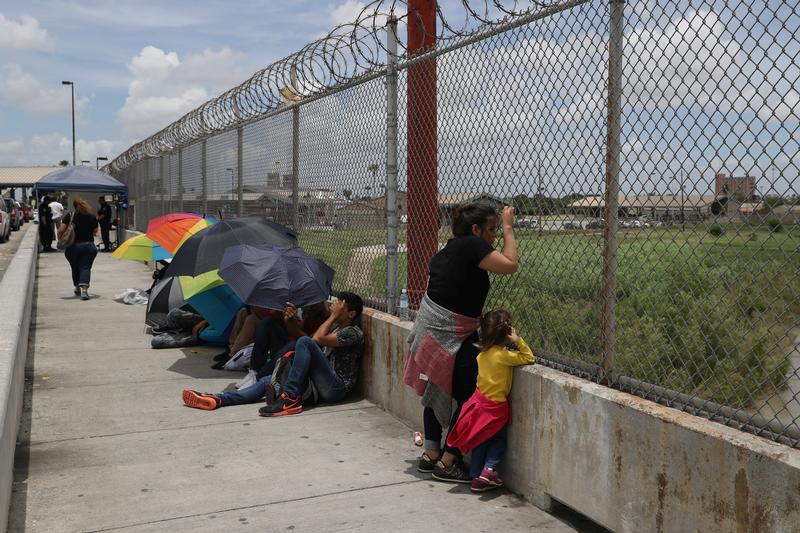Why families flee Central America to the United States
| Publisher | Human Rights Watch |
| Publication Date | 25 June 2018 |
| Cite as | Human Rights Watch, Why families flee Central America to the United States, 25 June 2018, available at: https://www.refworld.org/docid/5b87de3a3.html [accessed 19 May 2023] |
| Disclaimer | This is not a UNHCR publication. UNHCR is not responsible for, nor does it necessarily endorse, its content. Any views expressed are solely those of the author or publisher and do not necessarily reflect those of UNHCR, the United Nations or its Member States. |
June 25, 2018 5:21PM EDT
Gangs Threaten Children, Parents
By Zama Neff, Executive Director, Children's Rights Division
 A Honduran mother and her 3-year-old daughter wait with fellow asylum seekers on the Mexican side of the Brownsville-Matamoros International Bridge after being denied entry by U.S. Customs and Border Protection officers near Brownsville, Texas, U.S., June 24, 2018. © 2018 Reuters
A Honduran mother and her 3-year-old daughter wait with fellow asylum seekers on the Mexican side of the Brownsville-Matamoros International Bridge after being denied entry by U.S. Customs and Border Protection officers near Brownsville, Texas, U.S., June 24, 2018. © 2018 Reuters
Maria* and Carlos* never wanted to leave Honduras with their three children, they told me. But then gangs began threatening Carlos and their 13-year-old son Eddy*. The family moved houses, but one evening masked men came to their little shop. "They pulled out a pistol," Carlos told me, and said, "'Open up or we'll kill you.'" After that, "They took everything. They only left the refrigerator and the freezer. And they said if you go to the police, it will be the end of you. You will have no family, nothing. You know who you're dealing with." The men gave them 24 hours to get out.
Maria and Carlos are among the dozens of Honduran and Salvadoran parents and children my colleague Mike Bochenek and I interviewed on the Mexico-Guatemala border in March. Their stories followed common themes: boys threatened to join gangs, girls facing rape by gang members, parents extorted and killed.
Some said they would stay in Mexico, but were terrified of gang members from their countries moving around there. Additionally, some knew Mexico's migrant system was more likely to lock them up than offer legal protection and, at best, would leave them without work and their children without school – for months or years. For many, the United States offered the best chance for safety.
When the couple finished their story, Carlos, who had a black rosary around his neck, was wiping his eyes. Maria shifted uncomfortably, her ankle, injured from a fall on the journey, elevated in a chair.
We turned to their daughter Lilian*, 7, who wore a pink ruffled dress and had spread a paperback of Christian bible stories across her knees. She read to us through two missing front teeth, her older brother leaning over her shoulder and helping with the long words.
I met this family three months ago. By now, they could have made the dangerous journey to the US border. If they did, I wonder if Eddy, Lilian, and their 3-year-old sister Ana are still with their parents. Are strange teenagers changing Ana's diaper? Were they faced with the impossible choice of being deported together to serious risk of danger or staying separated in an abusive detention system?
Will this little family be whole and safe again?
Link to original story on HRW website

